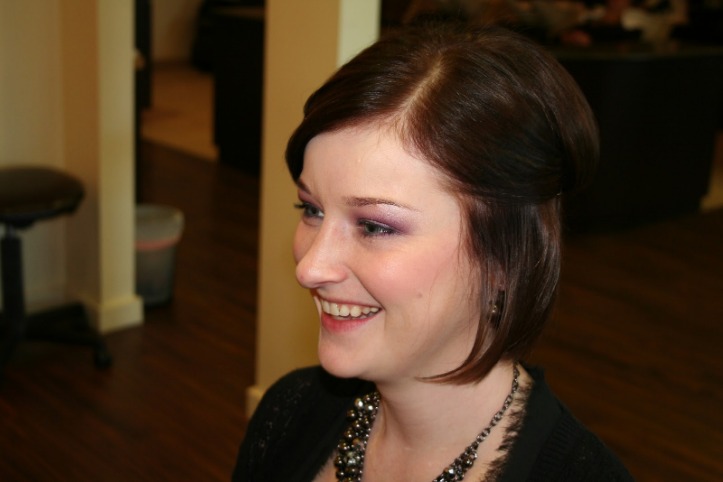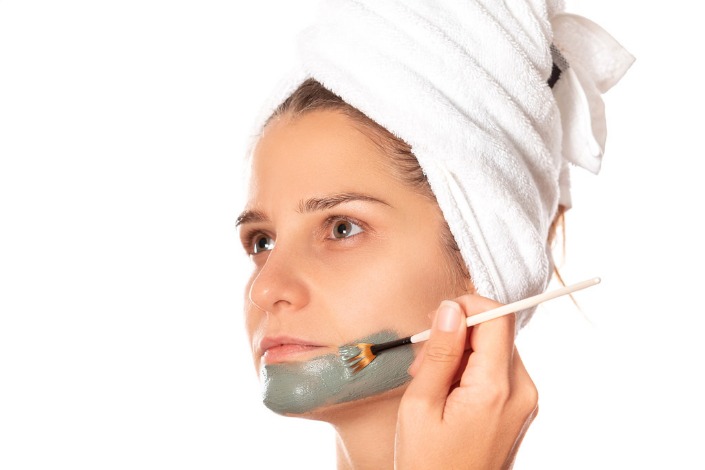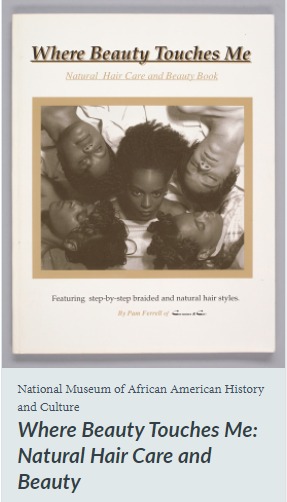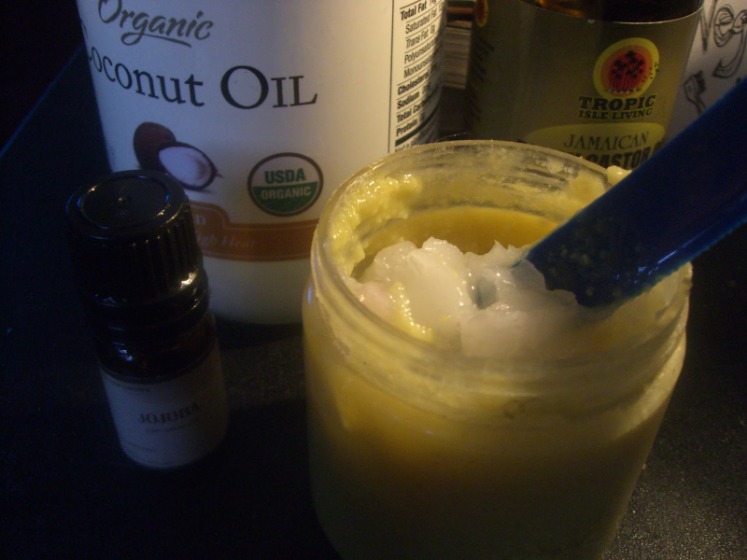Understanding Hair Types and Scalp Conditions
Understanding your hair type and scalp condition is essential for effective hair care and promoting healthy growth. Recognizing the differences between various hair textures and scalp issues allows you to choose the right products and routines that suit your unique needs. By gaining insight into these aspects, you can maintain your hair’s health, enhance its natural beauty, and prevent common problems such as dryness, oiliness, or breakage.
Identifying Your Hair Type (Straight, Wavy, Curly, Coily)
Understanding your hair type is essential for developing an effective hair care routine that promotes healthy growth and maintains your hair’s natural beauty. Identifying whether you have straight, wavy, curly, or coily hair helps you choose the right products and styling methods tailored to your hair’s unique needs.
Straight hair strands are generally smooth and appear shiny because the natural oils easily travel from the scalp down the hair shaft. Wavy hair has a gentle S-shaped pattern, offering a versatile look that can range from loose waves to more defined curls. Curly hair features well-defined springy loops, requiring moisture and gentle handling to reduce frizz. Coily hair, often called kinky or Afro-textured, consists of tight curls or zigzag patterns that are highly concentrated and tend to be dry and fragile, needing special hydration and care to maintain its health.
To identify your hair type, start by washing your hair and observing its natural pattern without any styling products. Look at how your hair falls or coils once it dries naturally. Additionally, consider the scalp condition — whether it’s oily, dry, or sensitive — as this influences your overall hair health and the best care practices to follow.
Understanding your hair type and scalp condition is a foundational step in creating a personalized hair care routine that enhances growth, reduces damage, and keeps your hair looking its best. Regular assessment and using suitable products will support healthy, strong, and beautiful hair over time.
Common Scalp Conditions and Their Impact on Hair Health
Understanding different hair types and scalp conditions is essential for maintaining healthy hair and promoting optimal growth. Hair types vary from straight, wavy, curly, to coily, each requiring specific care routines to prevent damage and enhance their natural beauty. Similarly, recognizing scalp conditions such as dryness, oiliness, or sensitivity helps in selecting suitable hair care products and treatments. Knowing your scalp type and hair texture allows for tailored care that supports strength, shine, and overall hair health.
Common scalp conditions, including dandruff, seborrheic dermatitis, psoriasis, and scalp acne, can significantly impact hair health. Dandruff causes flaking and can lead to itching, weakening hair from constant irritation. Seborrheic dermatitis results in greasy patches that may lead to hair thinning if left untreated. Psoriasis causes thick, scaly patches that can damage hair follicles, while scalp acne can obstruct hair growth and cause discomfort. Addressing these conditions with the right treatments and scalp care routines is vital to maintain healthy hair and prevent hair loss or damage.
Effective Hair Care Routines
Maintaining healthy hair requires a consistent and effective hair care routine. Proper practices can enhance hair growth, improve texture, and keep your scalp healthy. By understanding the right products, techniques, and habits, you can achieve beautiful, strong hair that looks and feels great every day.
Choosing the Right Shampoo and Conditioner
Establishing an effective hair care routine is essential for maintaining healthy, strong, and shiny hair. Starting with the right products can make a significant difference in how your hair looks and feels. To choose the appropriate shampoo and conditioner, consider your hair type, scalp condition, and specific needs such as hydration, volume, or repair. For instance, if you have oily hair, opt for a clarifying shampoo that helps control oil and buildup, while those with dry or damaged hair should look for moisturizing, nourishing formulas. Always read labels carefully and select products free of harsh chemicals like sulfates and parabens to minimize damage. Incorporating regular, gentle washing with suitable products, along with proper conditioning, will promote healthier hair growth and prevent issues like breakage and split ends. Additionally, complement your routine with regular scalp massages, balanced nutrition, and protection from heat styling and environmental damage to foster optimal hair growth and health.
Washing Frequency and Techniques
Establishing an effective hair care routine is essential for maintaining healthy, shiny hair and promoting growth. Regular washing helps to keep your scalp clean and free from dirt, oil, and product buildup, creating an ideal environment for hair growth. The frequency of washing varies depending on hair type—dry hair benefits from less frequent washes, while oily hair may require more regular cleansing. For most people, washing two to three times a week is a good starting point.
When washing your hair, use lukewarm water to prevent stripping natural oils and to avoid scalp dryness. Apply a gentle, sulfate-free shampoo to the scalp, massaging it thoroughly to stimulate blood flow and remove impurities. Rinse thoroughly to ensure no residue remains, which can lead to scalp irritation. Follow with a conditioner suited to your hair type, focusing on the mid-lengths and tips to nourish and detangle, making hair smoother and less prone to breakage.
In addition to regular washing, adopting proper hair washing techniques can enhance hair health. Avoid scrubbing the scalp harshly, and instead, use gentle, circular motions to clean effectively. When rinsing, ensure that all shampoo and conditioner are thoroughly washed out to prevent buildup. Incorporating occasional deep conditioning or hair masks can provide extra hydration and nutrients, supporting healthy growth. Consistently following these washing routines and techniques will help maintain strong, resilient hair that grows longer and healthier over time.
Importance of Deep Conditioning and Hair Masks
Maintaining healthy hair requires a consistent care routine that nourishes and strengthens each strand. Incorporating effective hair care practices, such as regular washing, gentle handling, and protecting hair from damage, can significantly promote hair growth and overall health.
Deep conditioning is a vital component of a successful hair care regimen. It helps to moisturize and repair damaged hair by penetrating the hair shaft, restoring lost moisture, and improving elasticity. Regular use of deep conditioners can reduce breakage and foster stronger, more resilient hair.
Hair masks take this process a step further by providing intensive treatment tailored to specific hair needs. They offer concentrated nutrients that can help combat dryness, frizz, and damage caused by styling or environmental factors. Incorporating hair masks into your routine, typically once a week, ensures your hair receives the nourishment necessary for optimal growth and health.
Avoiding Overwashing and Hair Damage
Establishing an effective hair care routine is essential for maintaining healthy, strong hair and promoting natural growth. One common mistake is overwashing, which can strip away essential oils and cause dryness and damage. To keep hair vibrant, it’s important to find a balance that cleanses without harming the scalp and strands.
- Wash hair 2-3 times a week or as needed based on hair type and scalp condition.
- Use a gentle, sulfate-free shampoo to prevent stripping natural oils.
- Follow with a nourishing conditioner to hydrate and strengthen hair strands.
- Avoid using hot water during washing, as it can weaken hair and lead to dryness.
- Limit the use of heat styling tools and always apply a heat protectant when styling.
- Regularly trim split ends to prevent further damage and promote healthy growth.
- Incorporate scalp massages and essential oils to stimulate blood flow and encourage growth.
- Maintain a balanced diet rich in vitamins and minerals to support hair health.
Natural Hair Growth Tips
Growing healthy, luscious hair is a goal for many, and understanding how to care for your hair naturally can make all the difference. Natural hair growth tips focus on nourishing your scalp, maintaining proper hydration, and adopting routines that support hair strength and longevity. Whether you’re looking to boost growth or improve overall hair health, simple and effective strategies can help you achieve your desired results.
Scalp Massage Benefits and Techniques
Healthy hair growth starts with proper hair care routines and understanding the benefits of scalp massage. Taking care of your scalp and following effective techniques can promote stronger, thicker hair over time.
Natural hair growth tips include maintaining a balanced diet rich in vitamins and minerals, staying hydrated, avoiding excessive heat styling, and using gentle hair products. Regularly washing your hair and avoiding tight hairstyles also reduce hair breakage and strain on hair follicles.
Scalp massage benefits include increased blood circulation to the hair follicles, which can stimulate growth, better nutrient delivery, and relaxation of scalp muscles. It also helps in reducing scalp dryness and flakiness, creating a healthy environment for hair to grow.
Scalp massage techniques are simple and effective. Here are some tips:
- Use fingertips to gently massage the scalp in circular motions for about 5-10 minutes daily.
- You can incorporate natural oils like coconut, castor, or jojoba oil for added nourishment during the massage.
- Apply gentle pressure and avoid scratching or applying too much force.
- Use the massage as part of your hair washing routine or before bed for relaxation and improved circulation.
Using Essential Oils for Hair Growth
Natural hair growth can be supported through a combination of proper care and the use of beneficial essential oils. Incorporating essential oils such as rosemary, peppermint, and lavender into your hair routine can stimulate the scalp, improve blood circulation, and promote healthier hair growth. To use these oils effectively, dilute a few drops in a carrier oil like coconut or jojoba oil and massage gently into the scalp. Regular scalp massages with essential oils not only help in nourishing hair follicles but also enhance relaxation and reduce stress, which can negatively impact hair growth. Additionally, maintaining a healthy diet, staying hydrated, and avoiding harsh chemical treatments contribute to stronger, longer hair. Consistent care and patience are key to achieving optimal hair growth naturally.
Incorporating Hair Growth Supplements
Boosting natural hair growth can be achieved through a combination of proper hair care practices and the right supplements. Incorporate a balanced diet rich in vitamins and minerals such as biotin, vitamin E, and zinc to support hair health. Regularly moisturizing your scalp helps maintain a healthy environment for growth, while gentle washing and minimizing heat styling reduce breakage. Integrating hair growth supplements into your routine can further enhance results; look for products containing biotin, collagen, and keratin to strengthen hair strands. Consistency is key, so combine these tips with patience and a healthy lifestyle for the best outcomes in promoting natural hair growth.
Healthy Lifestyle for Optimal Hair Growth
A healthy lifestyle plays a vital role in promoting optimal hair growth and maintaining vibrant, strong hair. By nourishing your body with the right nutrients, staying hydrated, and practicing good hair care habits, you can enhance the natural growth process and achieve healthier hair. Incorporating balanced nutrition, proper hygiene, and stress management are key components to supporting your hair’s overall health and beauty.
Balanced Diet Rich in Vitamins and Minerals
Maintaining a healthy lifestyle is essential for promoting optimal hair growth. A balanced diet rich in vitamins and minerals provides the nutrients necessary for strong, shiny hair and helps prevent hair loss. Incorporate foods such as leafy greens, nuts, seeds, fruits, and lean proteins into your daily meals to support hair health. Vitamins like A, C, D, and E, along with minerals such as zinc, iron, and biotin, play a crucial role in nourishing hair follicles and stimulating growth. Staying hydrated, managing stress levels, and getting adequate sleep further contribute to healthy hair. Remember, a holistic approach combining proper nutrition, hydration, and lifestyle habits is key to achieving lustrous, healthy hair naturally.
Staying Hydrated

Maintaining a healthy lifestyle is essential for optimal hair growth. A balanced diet rich in vitamins and minerals, such as biotin, zinc, and vitamins A, C, and E, supports healthy hair from within. Regular exercise improves blood circulation, ensuring that nutrients reach hair follicles more effectively. Managing stress through relaxation techniques like meditation or yoga can prevent hair loss caused by hormonal imbalance. Additionally, avoiding harsh chemical treatments and excessive heat styling can help preserve hair health. Staying hydrated is a simple yet crucial component of hair care, as water helps keep hair moisturized, reduces dryness, and promotes a shiny, strong appearance. Drinking plenty of water daily ensures that hair follicles are nourished and can produce healthy, resilient hair.
Reducing Stress and Its Effect on Hair
A healthy lifestyle plays a crucial role in promoting optimal hair growth and maintaining overall hair health. Proper nutrition, regular exercise, and sufficient sleep support the hair follicles and improve scalp circulation, leading to stronger and shinier hair. Managing stress effectively is also essential, as high stress levels can disrupt the hair growth cycle and cause hair loss. Techniques such as meditation, yoga, and deep breathing can help reduce stress and its negative impact on hair. Additionally, staying hydrated and avoiding harmful habits like smoking and excessive alcohol consumption contribute to healthier hair. Incorporating these lifestyle habits into your daily routine can lead to improved hair growth, reduced hair fall, and a vibrant, healthy scalp. Observing a balanced approach to life ensures that your hair receives the necessary nutrients and relaxation for optimal growth and strength.
Hair Styling and Protection
Healthy hair styling and protection are essential components of effective hair care and growth. Proper techniques and thoughtful products can help maintain the natural shine, strength, and overall appearance of your hair. By understanding how to style your hair safely and protect it from damage, you can promote long-term growth and enjoy vibrant, beautiful hair every day.
Minimizing Heat Styling Damage
To keep your hair healthy and promote growth, minimizing heat styling damage is essential. Excessive use of hot tools like flat irons, curling wands, and blow dryers can weaken hair strands, leading to breakage and dullness. To protect your hair, always apply a heat protectant spray before styling and choose the lowest effective temperature setting. Limiting heat styling sessions to a few times a week helps prevent cumulative damage. Additionally, embracing air-drying methods or using heat-free styling techniques can drastically reduce stress on your hair. Regular deep conditioning treatments and incorporating nourishing oils can also strengthen hair and improve its resilience. By adopting these practices, you can maintain vibrant, healthy hair while minimizing heat-related damage and supporting overall hair growth.
Protective Hairstyling Tips
Protective hairstyling is essential for maintaining healthy hair and encouraging growth. It helps minimize breakage, reduce exposure to environmental damage, and preserve moisture. Choosing the right styles and techniques can make a significant difference in the overall health of your hair.
When selecting protective styles, opt for styles that do not place too much tension on your scalp or roots, such as braids, twists, buns, or updos. Avoid styles that are overly tight or that require frequent manipulation, as these can lead to hair breakage and scalp stress.
To further protect your hair, always ensure your hair and scalp are moisturized before styling. Using lightweight oils or leave-in conditioners can help lock in moisture and prevent dryness. Additionally, wearing a satin or silk scarf or bonnet at night reduces friction and maintains your hairstyle while preventing moisture loss.
Limit the duration of protective styles to prevent stress on your hair and scalp. It’s advisable to take breaks between styles, allowing your hair to breathe, cleanse, and recover. When removing protective styles, do so gently to avoid unnecessary shedding or breakage.
Incorporating regular deep conditioning treatments and scalp massages into your routine also promotes hair growth and strengthens your hair from the roots. Remember to stay consistent with your hair care practices, and always pay attention to your hair’s needs to ensure healthy growth and protection.
Using Heat Protectants and Serums
Using heat protectants and serums is essential in maintaining healthy hair while styling with heat tools. These products create a safeguard against damage caused by high temperatures, helping to preserve the hair’s natural moisture and strength. Applying a heat protectant spray or serum before using curling irons, straighteners, or blow dryers can significantly reduce breakage and split ends, ensuring your hair remains smooth and vibrant. Additionally, serums can add shine, tame frizz, and provide a protective barrier that enhances overall hair health. Incorporating these products into your hair care routine supports not only styling needs but also promotes growth by minimizing damage and keeping your scalp and strands healthy. Regular use of heat protectants and serums can lead to stronger, shinier hair that grows longer and looks more vibrant with time.
Trimming and Hair Damage Prevention
Maintaining healthy hair involves more than just regular washing; it requires proper trimming and careful prevention of hair damage. Trimming helps to eliminate split ends and promote overall hair growth, while protecting your strands from damage ensures they remain strong and shiny. Incorporating effective hair care practices can lead to healthier, more resilient hair, making your beauty routine both simple and effective.
Importance of Regular Trims
Trimming your hair regularly is a vital aspect of effective hair care and growth maintenance. It helps keep your hair healthy, prevents actual damage, and promotes a stronger, shinier appearance. Regular trims remove split ends, which can travel up the hair shaft and cause further breakage, ultimately hindering your hair growth. Incorporating trims into your routine can improve the overall look and texture of your hair, making it easier to style and manage.
- Prevents Split Ends: Regular trimming eliminates split ends before they worsen, maintaining hair integrity.
- Reduces Breakage: Removing damaged ends reduces the chances of hair breakage and promotes healthy growth.
- Enhances Hair Appearance: Trimmed hair looks more polished, shiny, and healthy.
- Stimulates Hair Growth: While trims don’t directly speed up growth, they help prevent damage that can hinder length retention.
- Maintains Hair Manageability: Regularly trimmed hair is easier to detangle, style, and maintain day-to-day.
Overall, prioritizing regular trims and adopting a damage prevention routine are essential steps in preserving hair health and encouraging natural growth over time.
Identifying and Managing Damage
Maintaining healthy hair involves regular trimming and adopting proper care techniques to prevent damage. Trimming helps eliminate split ends, which can travel up the hair shaft and cause further breakage, promoting a neater and healthier appearance. To prevent hair damage, avoid excessive heat styling, harsh chemical treatments, and vigorous brushing. Using heat protectants and gentle hair products can significantly reduce stress on your strands. Additionally, nourishing your hair with deep conditioning treatments and minimizing exposure to environmental stressors like sun and pollution is essential. Recognizing signs of damage, such as brittle texture, excessive split ends, and dullness, allows for timely intervention. When managing damage, focus on trimming the affected areas, using repair masks, and adopting a gentle hair care routine. Regularly assessing your hair’s condition helps you adjust your care practices to ensure long-term hair health and growth.
Handling Split Ends Effectively
Trimming your hair regularly is one of the most effective ways to prevent damage and maintain healthy hair growth. By removing split ends promptly, you can prevent the damage from traveling up the hair shaft, leading to less breakage and a smoother, shinier appearance. It is recommended to get a trim every six to eight weeks depending on your hair type and styling habits.
To handle split ends effectively, consider using nourishing hair masks and serums that strengthen the strands. Avoid excessive heat styling, harsh chemical treatments, and tight hairstyles that put strain on your hair. Gentle brushing with a wide-tooth comb and using shampoo and conditioner suited for your hair type can also help minimize breakage and keep your hair healthy from root to tip.
Natural Remedies and DIY Treatments
Natural remedies and DIY treatments have gained popularity as effective and gentle options for hair care and promoting hair growth. Many people seek out these methods to nourish their scalp, strengthen their hair, and achieve healthier, fuller locks without the use of harsh chemicals. Exploring simple, homemade solutions can be a cost-effective and satisfying way to enhance your hair care routine naturally.
Herbal Rinses for Shine and Growth
Natural remedies and DIY treatments offer a gentle and effective way to enhance hair shine and promote growth. Herbal rinses are especially popular for nourishing the scalp and strengthening hair strands. Ingredients like rosemary, green tea, chamomile, and sage can be brewed into rinses that stimulate circulation and deliver essential nutrients directly to the hair follicles. Regular use of herbal rinses can improve hair texture, add natural shine, and encourage thicker growth over time. Incorporating oils such as castor or coconut oil into your routine, along with homemade herbal infusions, can further boost hair health and provide a calming, revitalizing experience. Consistency and patience are key to seeing long-term benefits from these natural solutions.
Reinfection Masks with Natural Ingredients
Natural remedies and DIY treatments can be effective ways to promote healthy hair growth and maintain scalp health. Using natural ingredients to create masks can nourish hair without the harsh chemicals found in many commercial products, helping to prevent reinfection and condition the scalp deeply.
- Natural Hair Masks: Combine ingredients like honey, coconut oil, aloe vera, and egg whites to create nourishing masks that improve hair strength and shine. These ingredients are rich in vitamins and fatty acids that stimulate hair growth.
- Reinfection Prevention: Regularly applying masks with natural antiseptics like tea tree oil or neem can help prevent scalp infections and reinfections that hinder growth.
- DIY Treatments: Simple treatments such as massaging warm coconut or olive oil into the scalp can improve blood circulation and promote growth. Adding herbal infusions like rosemary or peppermint can invigorate hair follicles.
- Frequency of Use: For best results, use these natural masks once a week. Consistency ensures the scalp remains healthy, reducing scalp issues that can arrest hair growth.
- Additional Tips: Maintain a balanced diet, stay hydrated, and avoid excessive heat styling to support natural hair growth alongside these remedies.
DIY Oil Treatments for Scalp and Hair Nourishment
Natural remedies and DIY treatments for hair nourishment have gained popularity as safe and affordable options to promote healthy hair growth. By using simple ingredients from your kitchen, you can create effective oil treatments that strengthen your scalp and hair strands naturally.
- Castor Oil: Rich in ricinoleic acid, castor oil deeply nourishes the scalp, stimulates hair growth, and adds shine to dull hair. Warm a small amount and massage into your scalp, leaving it on for a few hours or overnight before washing.
- Olive Oil: Packed with antioxidants and vitamins, olive oil helps improve scalp health and promotes stronger hair. Warm it slightly and massage into your scalp for 15-20 minutes before rinsing.
- Rosemary Oil: This essential oil is reputed to stimulate hair growth and improve circulation to the scalp. Mix a few drops with a carrier oil like jojoba or coconut and massage into the scalp regularly.
- Jojoba Oil: Closely resembles natural scalp oils, jojoba oil helps balance oil production and nourish hair follicles. Use it as a leave-in treatment or combine with other oils for a nourishing scalp massage.
- Warm the chosen oil slightly to enhance absorption.
- Apply the oil evenly to your scalp and hair, focusing on the roots.
- Massage gently for 5-10 minutes to stimulate blood circulation.
- Allow the oil to sit for at least 30 minutes, or for better results, overnight.
- Wash your hair with a mild shampoo to remove excess oil.



